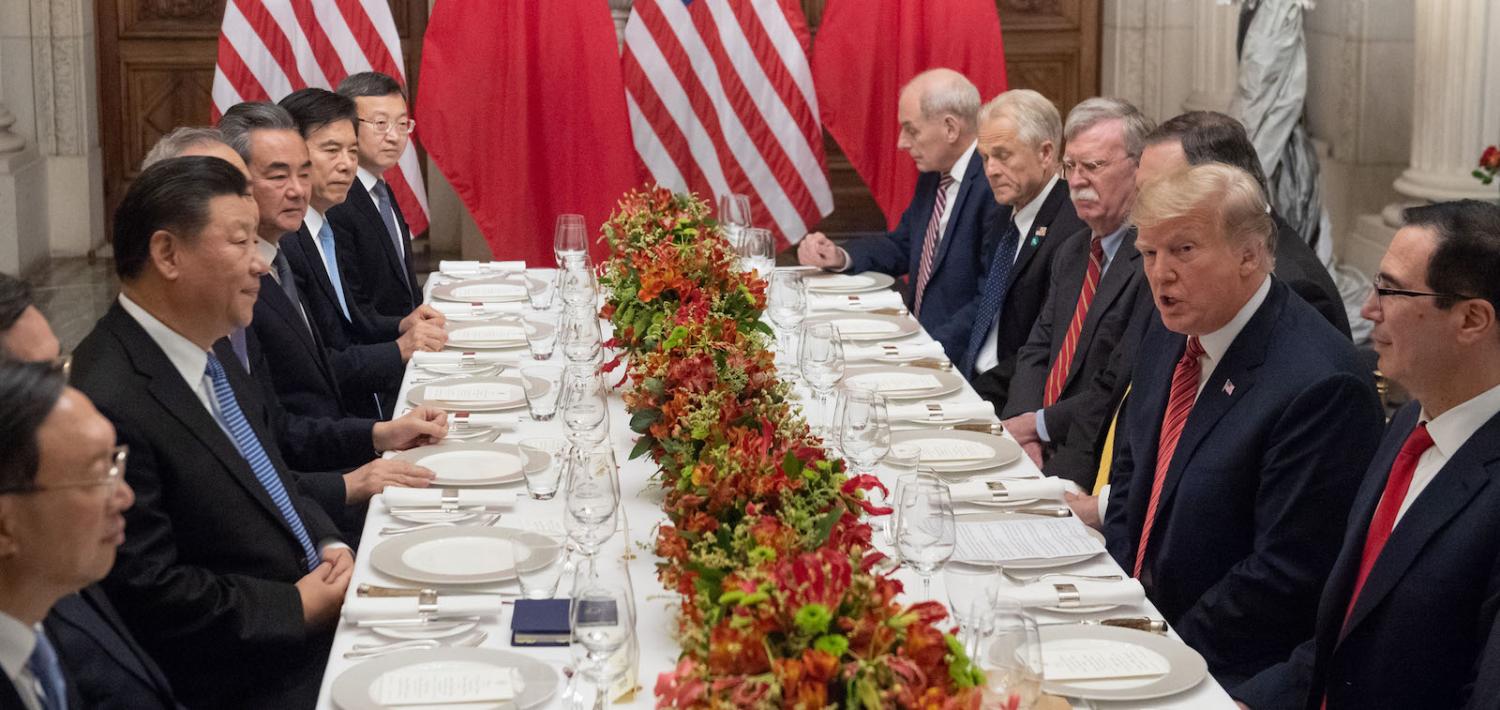This truce is by no means the end of trade tensions between China and the US.
Over what was undoubtedly a delicious dinner last Saturday night on the sidelines of the G20 meeting in Buenos Aires, US President Donald Trump and Chinese President Xi Jinping agreed to extend the deadline for the increase of US tariffs on Chinese goods from 10% to 25%. Rather than kicking in on 1 January 2019, the two sides now have an additional 90 days (and counting) to resolve some complicated issues that have been troubling them for many years. And that’s assuming nobody changes their mind in the meantime.
Trump instituted these tariffs to protest against America's trade deficit with China. But as many economists convincingly argue, the question of bilateral trade deficits cannot simply be addressed with trade policy. Restricting imports via tariffs is not a solution, especially when those imports are components of products that are then sold as exports. Rather, trade deficits are a matter of domestic policy settings. This is certainly true in the case of the US and China.
So if this is not about economics, what is this about? Yes, it’s geopolitics.
Both leaders have their own agendas, pressures, and predilections. Trump wants to “make America great again”. And not dissimilarly, Xi wants to achieve “the China dream of rejuvenation”, a reference to the idea that, before the 1800s, China held a far more important place in the global hierarchy and this will naturally come to pass again.
Given that economic logic is not the major driver of these debates, the outlook cannot be easily predicted. There are many risks. Primarily these are that President Trump changes his mind and reneges on the 90-day extension and that President Xi doesn’t compromise on China’s objectives.
For President Trump, criticisms from China hawks at home or diminishing concerns about a US market downturn could prompt him to reassess the 90-day truce.
President Xi also has domestic pressures. His commitment to comprehensively upgrading industrial policy and moving China to the top of global production chains through the Made in China 2025 (MIC2025) policy is one. MIC2025 is a program based on, among other things, Germany’s Industry 4.0 plan. A key aspect of China’s strategy is substituting foreign technology with home-grown innovations. Its guiding principles include innovation-driven manufacturing, an emphasis on quality over quantity, a focus on green development, optimising the structure of Chinese industry, and nurturing human talent.
There is room for a deal, but it would require US pragmatism. US policymakers will need to accept that progress could be made on areas such as market access and intellectual property protection, but anything that looks like it could threaten MIC2025 will be much less open to discussion.
This truce is by no means the end of trade tensions between China and the US. The deal is fragile and even if it holds, the issues the two countries need to resolve are profoundly complicated. The risk of damage to the US and Chinese economies, global growth, and Australia’s economic well-being, is just as real as it was last week.

